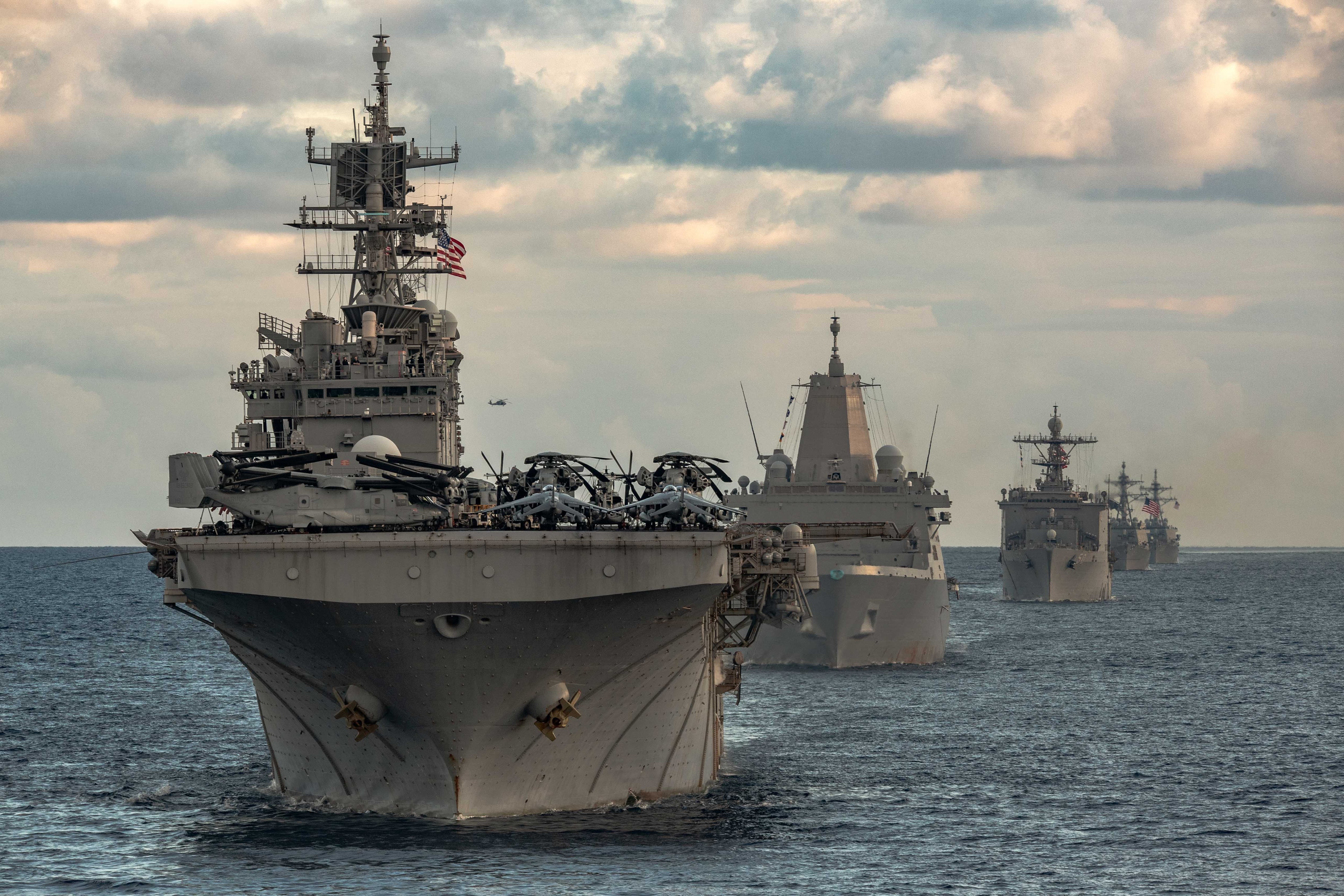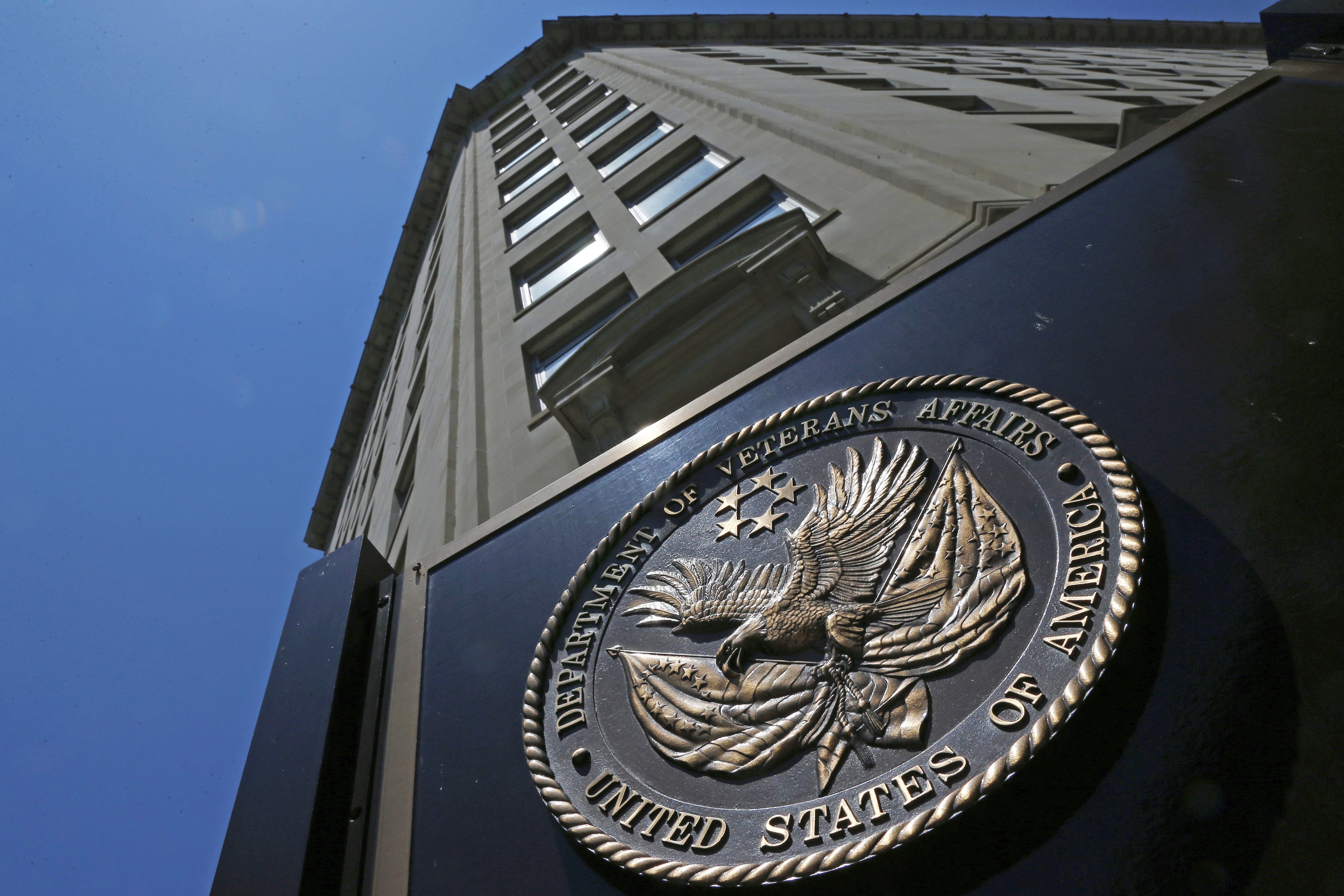President Donald Trump on April 9 signed into law a new policy aimed at revitalizing an American shipbuilding industry that has fallen well behind production levels of its rivals from the People’s Republic of China.
Language in the executive order, which cites the need to strengthen a “commercial shipbuilding capacity and maritime workforce,” mirrors many concerns expressed among the industry’s defense counterparts.
In an April 8 hearing of Navy leadership before the Senate Armed Services Subcommittee on Seapower, service officials voiced concerns regarding stagnant shipbuilding and what that could mean for success in great power conflicts.
Navy officials in March 2024 stated the service’s goal of growing its fleet of battle force ships to 381 over the next 30 years, a plan that would require investing at least $40 billion each year over the duration of the effort, according to the Congressional Budget Office.
There are currently fewer than 300 battle force ships in the fleet — and that number is expected to drop. Current projections indicate the Navy will retire close to a dozen more ships through 2027 than it expects to commission.
In a policy statement in February, officials from the nonprofit Navy League echoed the need to expand the service’s fleet while calling on Congress to increase funding for public shipyards and Coast Guard ice breakers.
An estimated 250,000 skilled or well-compensated workers must be hired over the next decade to accomplish shipbuilding and vessel maintenance goals, according to Matthew Sermon, the direct reporting program manager for the Navy’s maritime industrial base program.
Sermon, who spoke at the April 9 hearing, added the Navy is looking to expand supply chain capacity, partner with government and private organizations and address workforce challenges in what he described as an “all-hands-on-deck effort that will attract, train and retain American manufacturing and engineering workers.”
“Simply put, we need more ships delivered on time and on budget, and we are challenged in both of these arenas,” Dr. Brett Seidle, acting assistant secretary of the Navy for research, development and acquisition, told the Senate Armed Services Committee last month. “Costs are rising faster than inflation and schedules on multiple programs are delayed one to three years.”
The same day as Seidle’s testimony, the Government Accountability Office released a report calling for sweeping changes to U.S. shipbuilding if the 381-ship goal is ever to be realized.
The Navy failed to increase its fleet over the previous 20 years despite a shipbuilding budget that doubled during that period, the report said. Meanwhile, the Navy’s frigate program is running three years behind on delivery.
“We found that Navy ships cost billions more and take years longer to build than planned while often falling short of quality and performance expectations,” Shelby Oakley, a director at the GAO, said in a statement to the Senate Armed Services Committee.
Discussing in his order an industry the GAO described as lingering in a “perpetual state of triage,” President Trump decried “decades of government neglect, leading to the decline of a once strong industrial base while simultaneously empowering our adversaries and eroding United States national security.”
In response to the April 9 mandate, the Assistant to the President for National Security Affairs Mike Waltz has been instructed to submit an action plan to the president within 210 days. Defense Secretary Pete Hegseth is also expected to review different avenues for investing private capital in commercial and defense shipbuilding capabilities, supply chains, port infrastructure, workforce strength and ship repair.
Global ramifications
Navy leaders assessing the shipbuilding aspirations, meanwhile, are pushing for, among other items, a robust annual output of ballistic and fast attack submarines to counter near-peer threats in potential conflict areas like the Indo-Pacific and Arctic.
At present, the state of U.S. shipbuilding is impacting not only the delivery of U.S. vessels but also the demand for Virginia-class submarines by Australia as part of the trilateral AUKUS — Australia, the United Kingdom and the U.S. — security agreement.
While the Navy aims to deliver one Columbia-class and two Virginia-class submarines per year, AUKUS commitments increase the annual demand for Virginia-class boats to 2.33, Rear Adm. Jonathan Rucker, program executive officer for attack submarines, said during the April 8 hearing.
Those demands coincide with the Navy’s ongoing production issues with the future USS District of Columbia, the Navy’s first Columbia-class submarine — slated to replace Ohio-class boats — which has been floundering in production and is currently delayed by up to 18 months.
“While this delay is due to a variety of factors, it is unacceptable,” said Rear Adm. Todd Weeks, the Navy’s program executive officer for strategic submarines. “The Columbia class is the Navy’s No. 1 acquisition priority and a critical once-in-a-generation recapitalization effort for this foundational leg of the nation’s nuclear triad.”
The sluggish rate of producing U.S. submarines and surface vessels has ignited concern over whether the U.S. would even be able to replace disabled or sunken ships in a near-peer combat environment.
“When it’s a ... conflict and we’re losing ships — i.e., they’re destroyed and sunk — our ability to replace those at a rate higher than the adversary [is vital],” Sen. Tim Sheehy (R-Mont.) said during the hearing. “Two things ... have to happen — one or both: We have to be eminently survivable under any combat conditions or we have to be able to replace [vessels]. And right now, we can’t replace.”
The Navy recently commissioned the Virginia-class attack submarine Iowa. Two additional Virginia-class submarines, Massachusetts and Idaho, are expected to be delivered this year, officials said at the hearing.
Additionally, the Coast Guard in December added its first polar ice breaker in a quarter-century, a critical development for use in an Arctic region that has yielded a surge in military activity.
The U.S. has for years been pushed by military officials and lawmakers to devote more resources to the rapidly evolving Arctic environment, but it is recent regional collaboration between China and Russia that is giving rise to an all-new sense of urgency.
Beijing is increasingly eyeing the Arctic as a domain that would further China’s power assertions and economic resources, Pentagon officials warned in December. Those concerns were amplified by a swarm of military activity in the region. Despite Russia being in its third year of war following its February 2022 invasion of Ukraine, it has remained committed to directing military and economic resources to the region — at times with China by its side.
In its 2024 Arctic Strategy, the Pentagon noted the “increasingly accessible region is becoming a venue for strategic competition, and the United States must stand ready to meet the challenge alongside allies and partners.”
Military Times editor Nikki Wentling contributed to this report.
Riley Ceder is a reporter at Military Times, where he covers breaking news, criminal justice, investigations, and cyber. He previously worked as an investigative practicum student at The Washington Post, where he contributed to the Abused by the Badge investigation.
Zita Ballinger Fletcher previously served as editor of Military History Quarterly and Vietnam magazines and as the historian of the U.S. Drug Enforcement Administration. She holds an M.A. with distinction in military history.
J.D. Simkins is the executive editor of Military Times and Defense News, and a Marine Corps veteran of the Iraq War.





